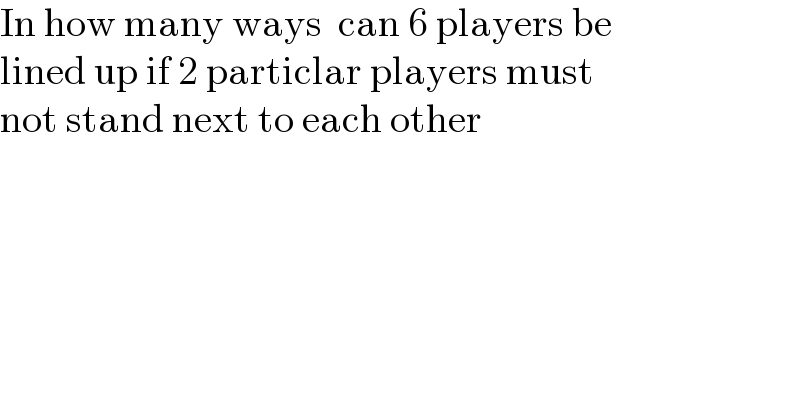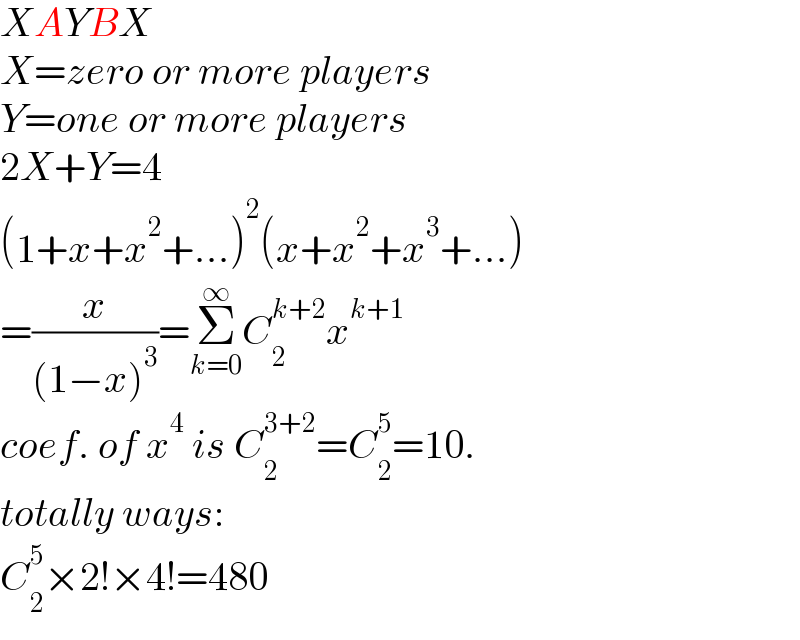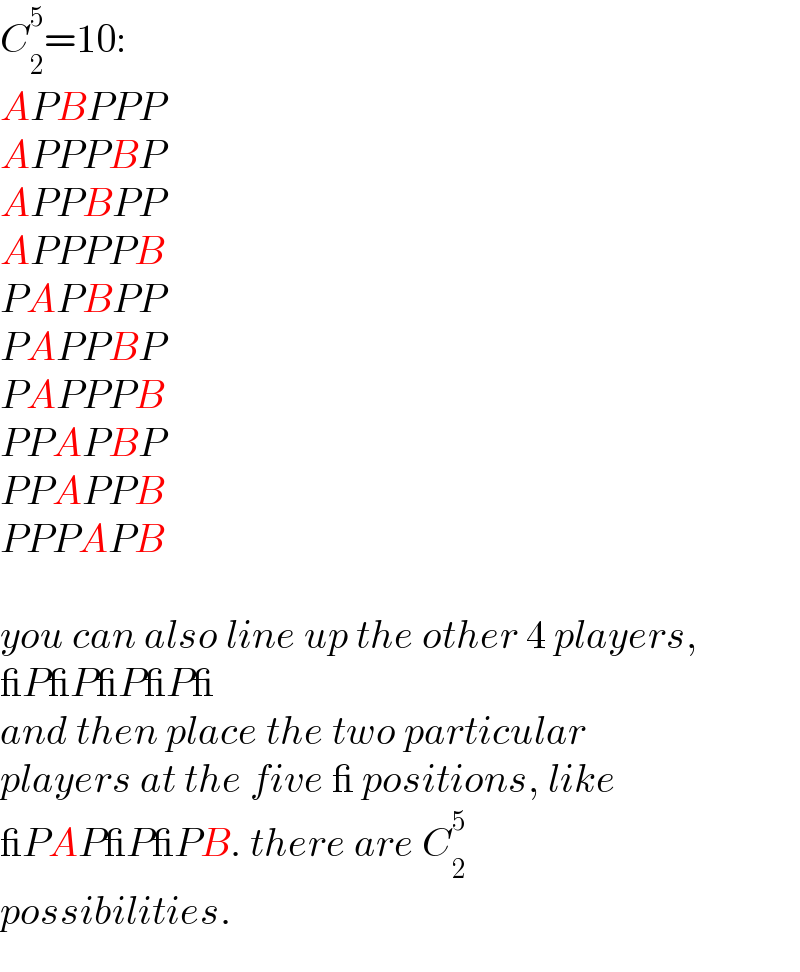Question Number 153572 by otchereabdullai@gmail.com last updated on 10/Sep/21

Commented by Tawa11 last updated on 08/Sep/21
![Let the players be ABCDEF ⇒ ∗ C ∗ D ∗ E ∗ F ∗ [A and B are not next to each other] ∴ = 4! × 5 × 4 ∴ = 24 × 20 ∴ = 480 ways.](https://www.tinkutara.com/question/Q153606.png)
Answered by mr W last updated on 08/Sep/21

Commented by mr W last updated on 08/Sep/21

Commented by otchereabdullai@gmail.com last updated on 08/Sep/21

Answered by peter frank last updated on 08/Sep/21

